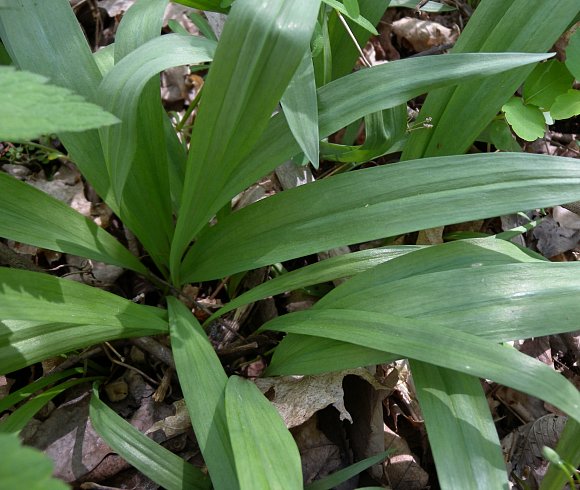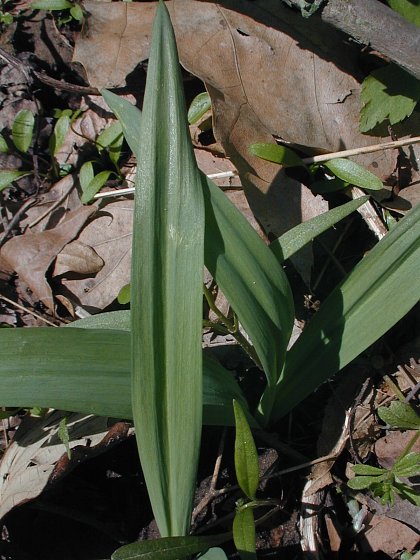
Cultivation: The preference is dappled sunlight during the spring, while during the summer any light level is tolerated because the basal leaves have withered away by this time. Conditions should be more or less mesic; the soil should be loamy, fertile, and relatively loose with decaying organic material. Plants should not be transplanted when the basal leaves are present.
Range & Habitat: The native Narrow-Leaved Wild Leek (Allium burdickii) is occasional in NE and east-central Illinois, while in the the rest of the state it is uncommon or absent (see Distribution Map). This species is found primarily in the upper Midwest. Because Narrow-Leaved Wild Leek has not been reliably distinguished from the more common Wild Leek (Allium tricoccum) in the past, it is probably more common and widespread than official records indicate. Habitats include rich deciduous woodlands, wooded bluffs, wooded areas along rivers and streams, and cemetery prairies. Narrow-Leaved Wild Leek is an indicator that the original ground flora of a woodlands is still intact. It is currently threatened by the spread of an invasive European species, Garlic Mustard (Alliaria petiolata), in wooded areas. Narrow-Leaved Wild Leek is found in higher quality natural areas.

Faunal Associations: The flower pollinators are probably similar to those of Allium tricoccum (Wild Leek), consisting of various bees and flies. Both nectar and pollen are available as floral rewards to such visitors. Insects that feed on the bulbs, foliage, flowers, or seeds are poorly understood for Narrow-Leaved Wild Leek (Allium burdickii). However, insects that are known to feed on one or more Allium spp. (Onions) include: the larvae of Delia antiqua (Onion Maggot), Eumerus strigatus (Onion Bulb Fly), and Eumerus tuberculatus (Lesser Bulb Fly); the plant bugs Lindbergocapsus ainsliei and Lindbergocapsus allii; and Thrips tabaci (Onion Thrips). Mammalian herbivores usually avoid consumption of the foliage.
Photographic Location: Mesic woodlands in Piatt County and Vermilion County in east-central Illinois; also a cemetery prairie in Champaign County, Illinois.

Comments: Some authorities consider Narrow-Leaved Wild Leek to be a variety of the more common Wild Leek, or Allium tricoccum burdickii (see eFloras, FNA Vol. 26, pp. 224-226), while other authorities consider this species to be distinct, Allium burdickii (Mohlenbrock, 2002). The latter viewpoint has been adopted here. Narrow-Leaved Wild Leek can be distinguished from Wild Leek by its more narrow leaves (less than 1½" across), greenish petioles (rather than reddish), fewer-flowered umbels (less than 21 flowers). The bulbs of Narrow-Leaved Wild Leek are also supposed to be smaller in size, and the stamens of its flowers may be less exerted than those of Wild Leek. Because the range of these two species (or varieties) overlap, it is possible that they hybridize. As a result, some collected or photographed specimens may be difficult to classify. Both of these species (or varieties) are distinct from other Allium spp. in Illinois by their wider leaves and the absence of these leaves when the flowers bloom.